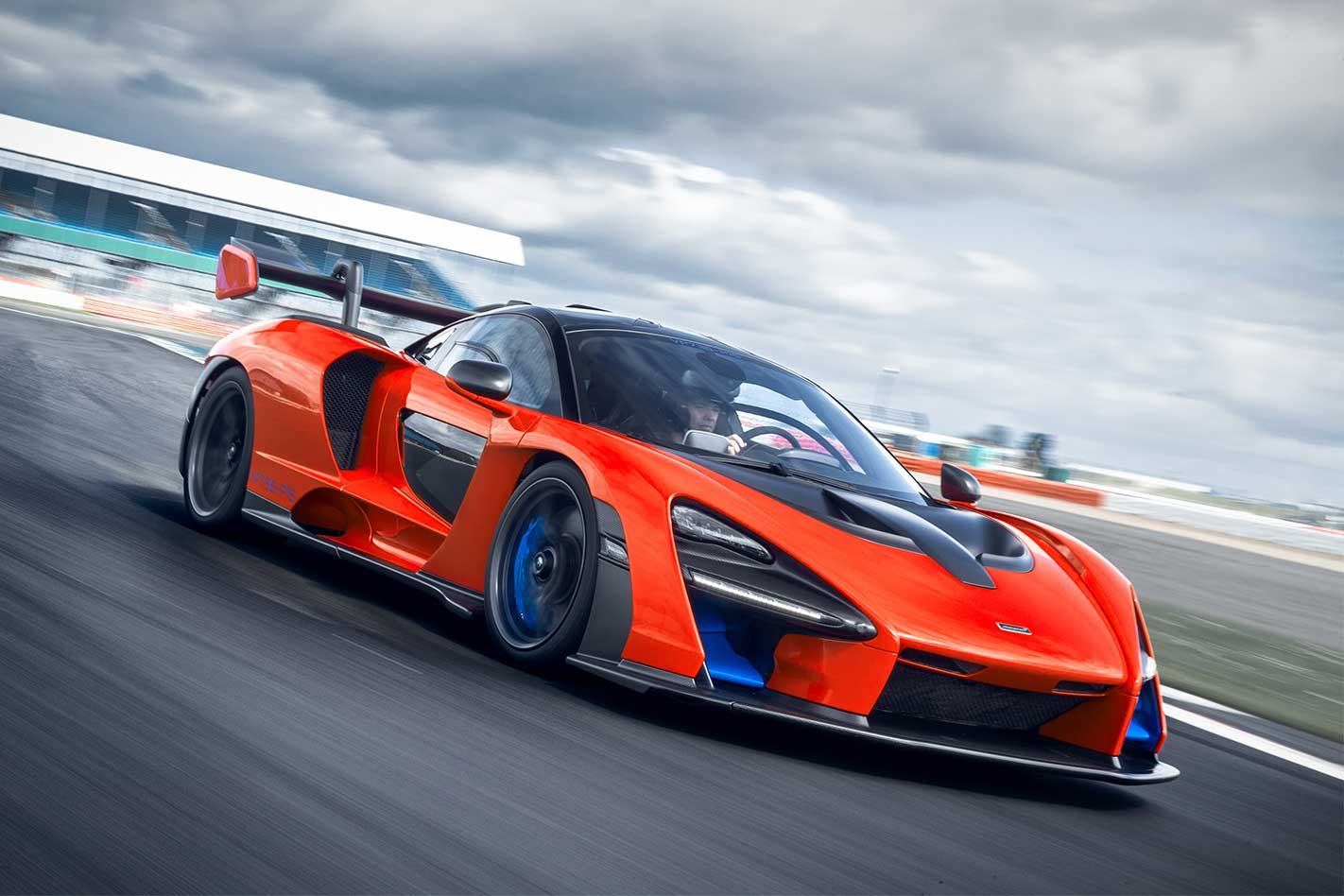I overhear somebody talking to my instructor/passenger/babysitter as I strap myself into the McLaren Senna. But “remind him he’s got less…” is all I catch as I do up the harness buckle before somebody plugs in an intercom.
Presumably the rest of the sentence was “time”, because I’m meant to have a 15-minute slot driving the Senna, but know the time it takes to attach many, many video cameras to its innards and outards will reduce my allotted minutes.
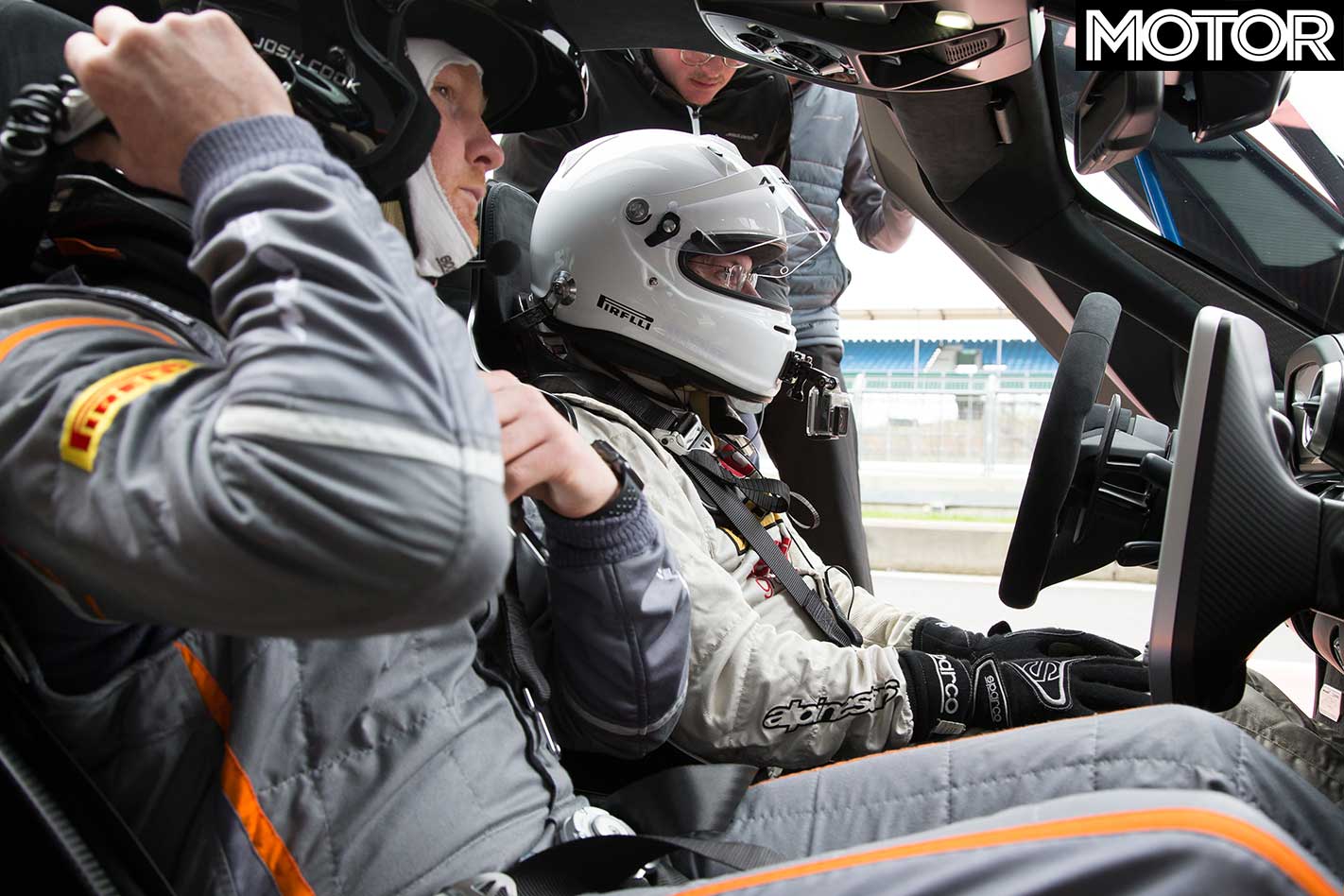
And then the doors slam down and my minder, Josh Cook – a works Vauxhall driver in the BTCC – tells me what has actually been said. “They say to remind you you’ve got less tyre temperature, because the car has been in the pit lane for a while,” he says. Right. I see. Josh, isn’t this a road car? And we’re worrying about tyre temperatures?
Some road car. “We wanted to create the ultimate road-legal track car,” says Andy Palmer (no, the other one), McLaren’s Ultimate Series director. “It’ll pioneer technology that we can bring down to the Super and Sports Series cars.”
So although there will be 500 McLaren Sennas, fully homologated as a series production car for worldwide sale (this one is still, technically, a prototype), it happens to make 588kW, and an accompanying 800kg of downforce at 250km/h. Hence the rear wing. And the rest of the looks.
It won’t take long to reach 250km/h, either. McLaren is usually accurate with its acceleration quotes: it says 0-100km/h will take 2.8sec, 0-200km/h 6.8sec and 0-300km/h just 17.5sec. The top speed is 340km/h.
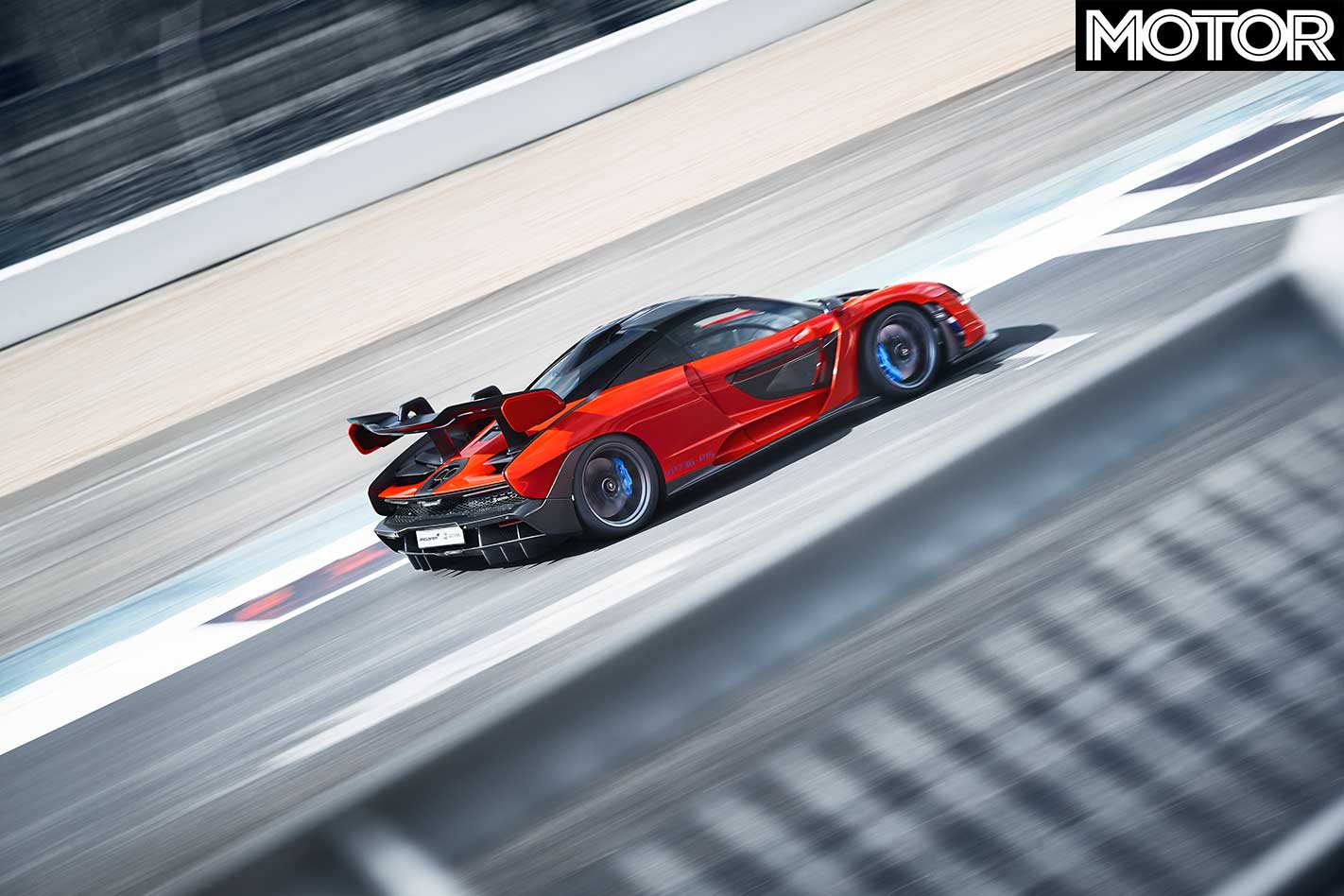
Another, perhaps even more significant, number is the 1198kg the Senna weighs (before fluids). The previous Ultimate Series McLaren, the P1, weighed 1395kg in similar trim, owing to its hybrid tech. The 720S weighs 1283kg dry.
This car, visibly larger than a 720S because of its aerodynamic addenda, uses a chassis developed from that car. The Senna’s carbon fibre ‘Monocage III’ passenger cell, the strongest yet used in a McLaren road car, has been both strengthened and lightened, particularly around the rear bulkhead, where additional material eats into rear visibility.
Or it would if you could see much past the wing. And besides, Josh wants the centre mirror and leaves me with the door mirrors, which give a reasonable view. Visibility generally, in fact, is good, for a car like this. You can even specify glass panels in the doors. They add a bit of weight but, well, you can never see too much. Bear in mind, too, that this is a pretty intimidating car.
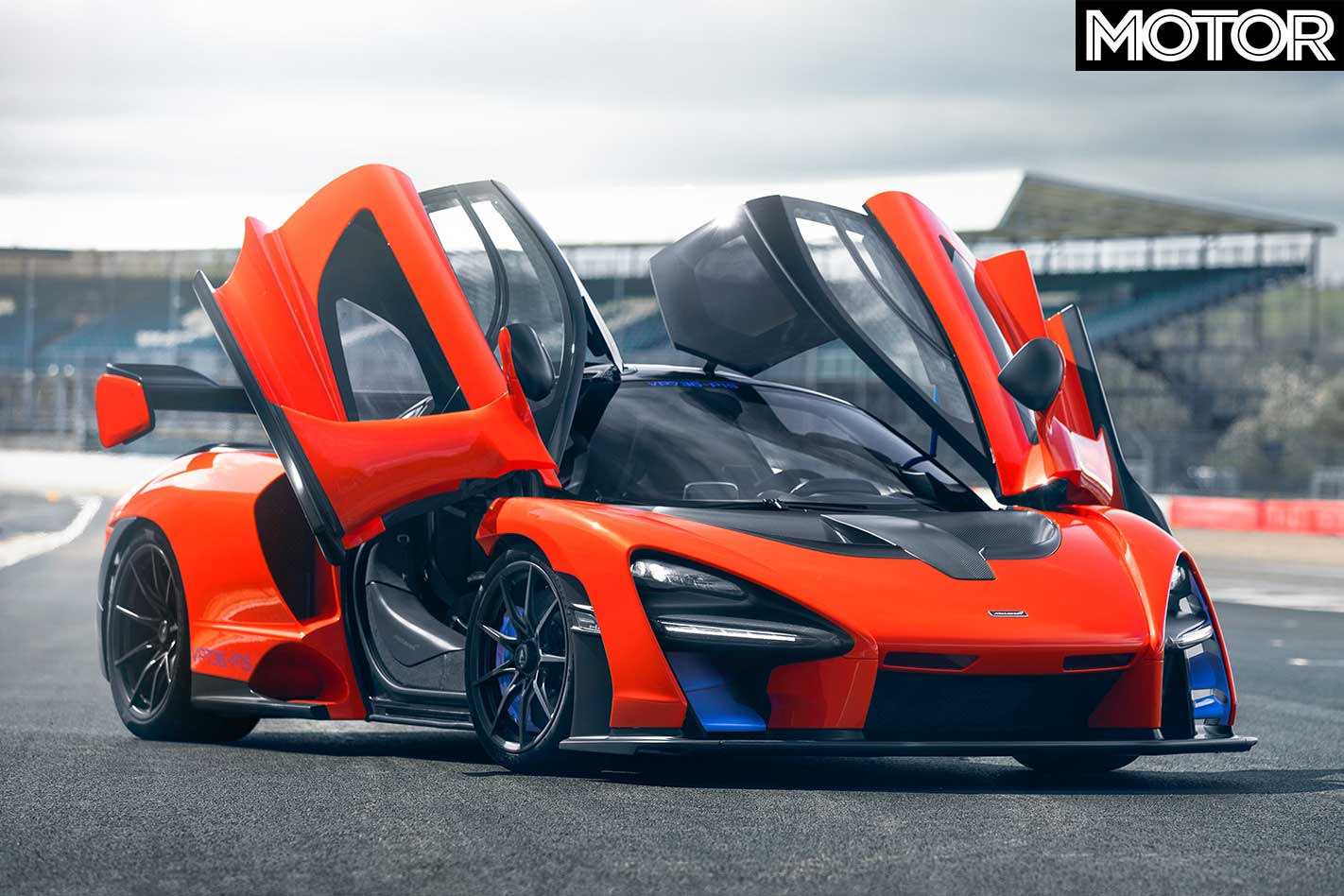
There are the statistics, such as 491kW per tonne, there’s the appearance of it, there’s the fact that they’ve insisted I wear full race pyjamas, a HANS device and an intercom, and once into the six-point harness I can’t reach the door to pull it shut.
So far, then, it feels like getting into a customer racecar, by which I mean not a rough-and-ready used racer. It’s immaculate yet overwhelming; a concept made real. Not unlike an Aston Martin Vulcan, a project born from a similar ethos: “We put our all into it, and you buy it to enjoy it.”
The Senna’s interior is less flamboyant than the Vulcan’s or the McLaren P1’s. It’s all naked carbon fibre, naturally, but with fewer outlandish curves. It’s more straightforward, racier.
But there are very ‘McLaren’ touches. Because McLaren fits sensible steering wheels to all of its cars, this one gets the same.
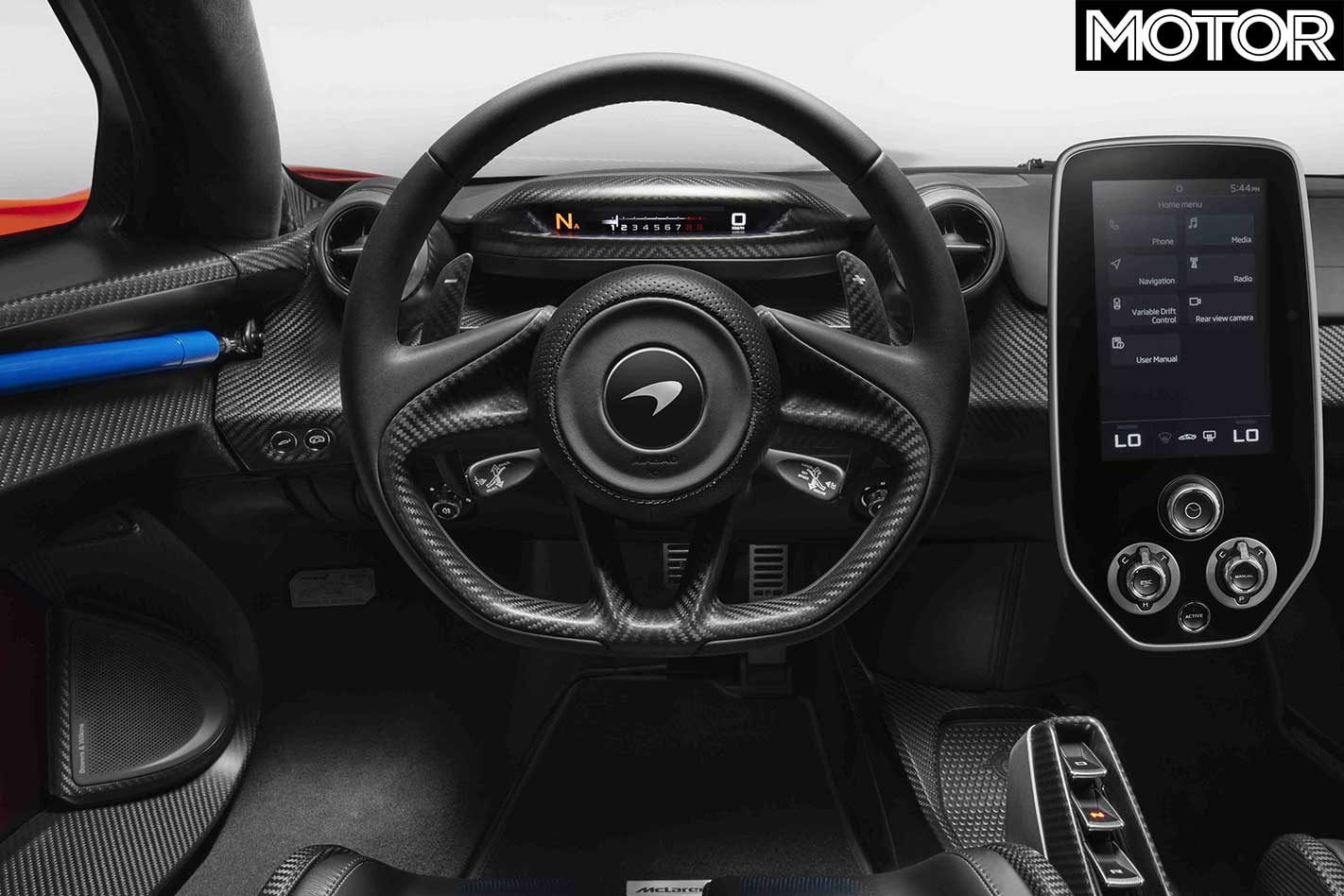
The 720S’s digital instrument binnacle, which can be upright with a big, clear layout, or lowered for a minimal one (as in the 720S; I prefer it raised), is replicated, and so too are the basics of the driving position, albeit in a massively sculpted seat. The brake pedal is central so you can pick which foot to use, and the steering wheel is hugely adjustable.
If you can’t find a comfortable, purposeful driving position here, I doubt you’ll find one anywhere. For all of the intimidation you might feel on the outside, for all that it looks like no other McLaren, it at least feels like one.
It does when you’re rolling too. There are different drive modes as on other McLarens, for chassis and powertrain. But what I’ve had to do for a very short stint on the track is ignore the road stuff and pop the car into Race mode, which lowers the Senna by 50mm and, thanks to underfloor wizardry, is responsible for creating 60 per cent of the car’s total downforce.
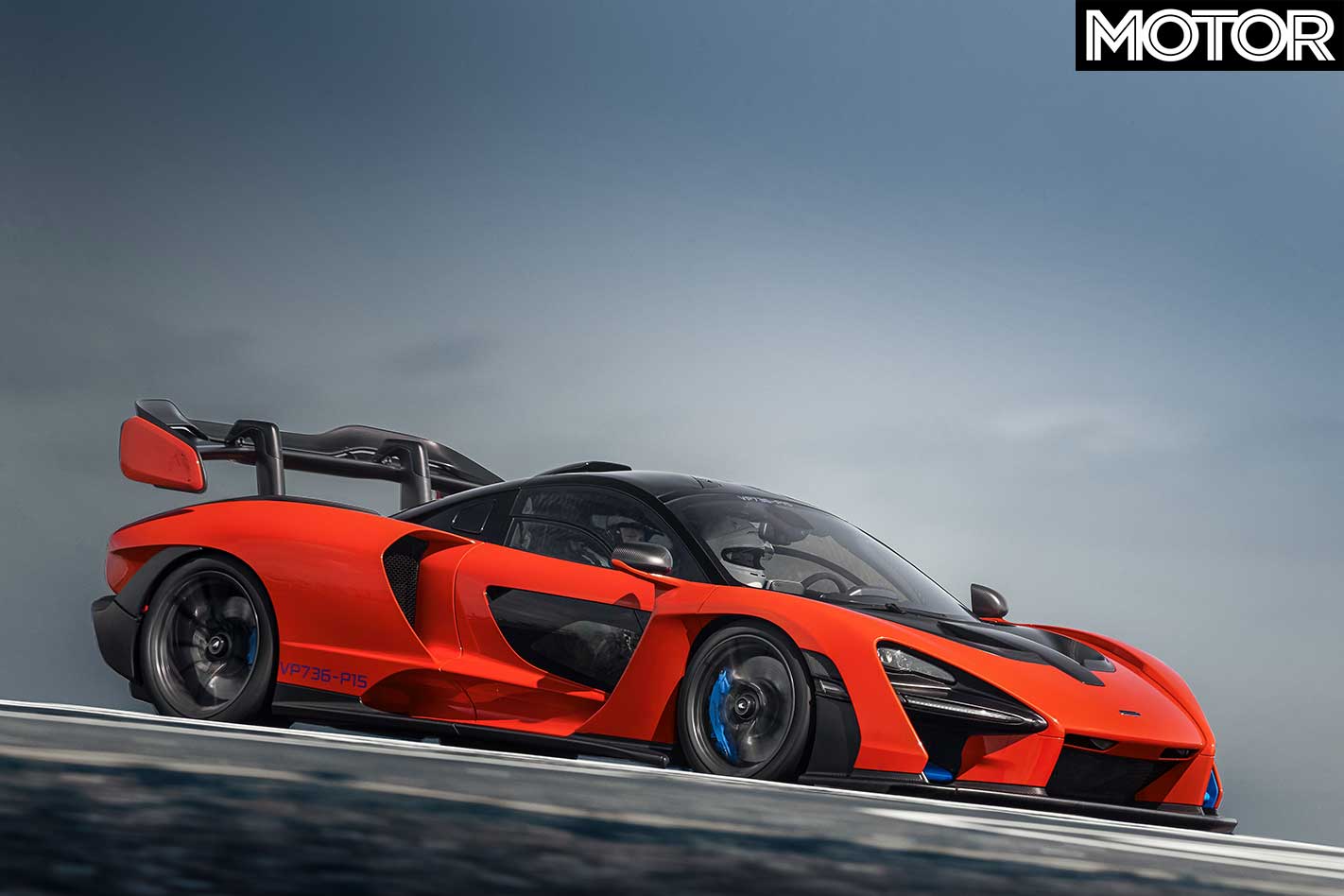
There are active aero elements front and rear, including a 20-degree variance in rear wing angle. This is the kind of approach that begets walloping lap times: add a little power, forget hybridisation, take out a load of weight and add aero. It’s why the Lamborghini Huracan Performante laps faster than any of the famed hypercar trio: LaFerrari, Porsche 918 and McLaren’s own P1.
A McLaren 675 LT would be as quick around the same circuit as a P1, for example. And here, now, the Senna eclipses that. By a distance.
It has, as standard, a new compound and design of Pirelli Trofeo tyres (you can get more ordinary Pirellis as a no-cost option), which mean it can pull around 0.3g (16km/h or so) more than a 720S in high-speed corners and 0.2g (8km/h) in lower speed ones. A P1 is, typically, ‘merely’ around 0.2g and 0.1g quicker than a 720S respectively.
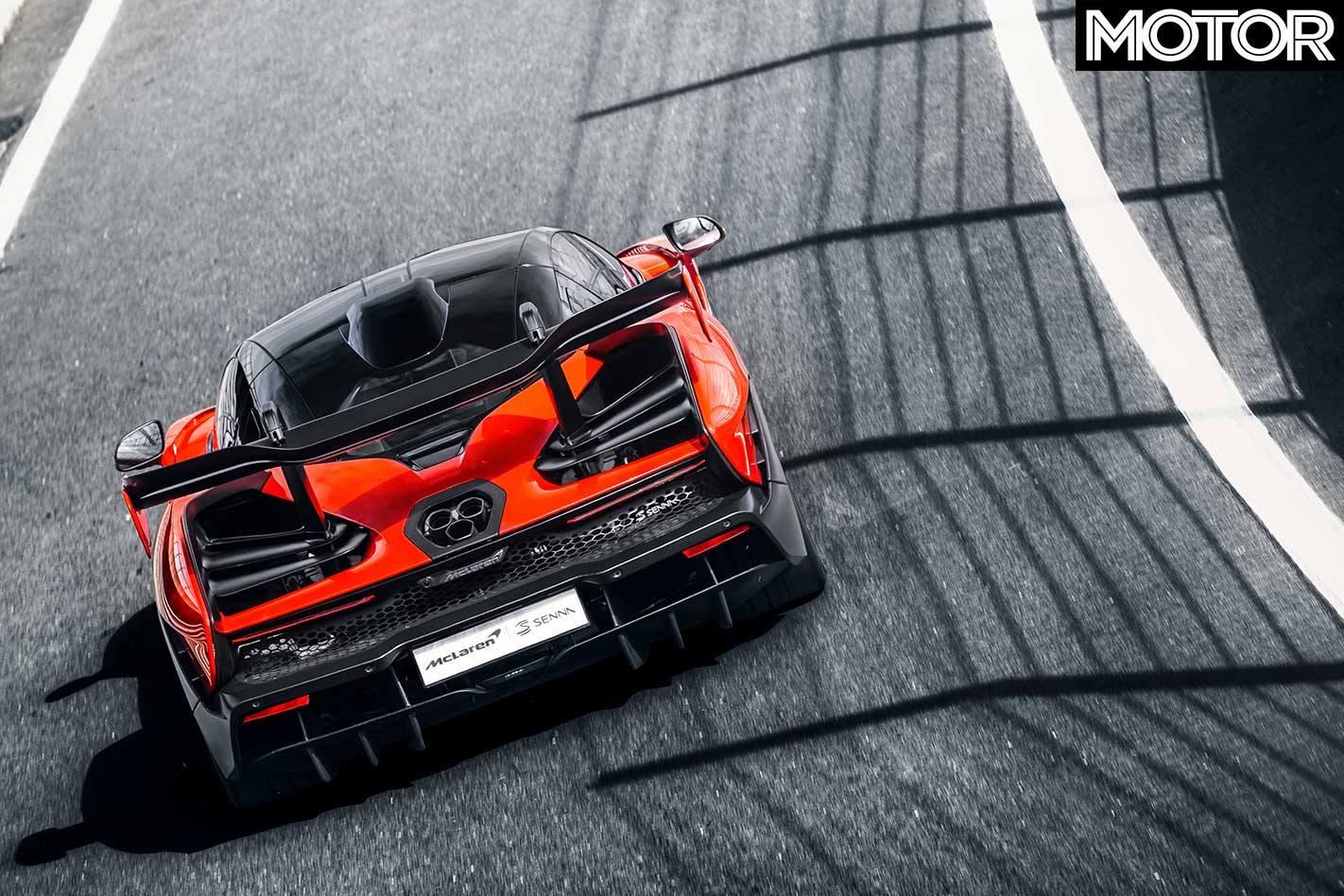
And then there are the Senna’s going and stopping credentials. That power is up by 9 per cent over the 720S doesn’t sound like a lot, but to try it is to whack into the soft rev limiter repeatedly. It’s weird.
There are cars with half of the Senna’s 588kW where you’d hesitate to extend your throttle foot. But there’s such smoothness and reassurance at work here that it’s easy. McLaren has, as it does, employed a 4.0-litre, twin-turbocharged V8 to drive the back wheels through a dual-clutch automatic gearbox, and it knows its way around this unit (or these different units, it would say, because of the internal differences) to the extent that using it is as straightforward as in a 570S, only turned up to warp speed.
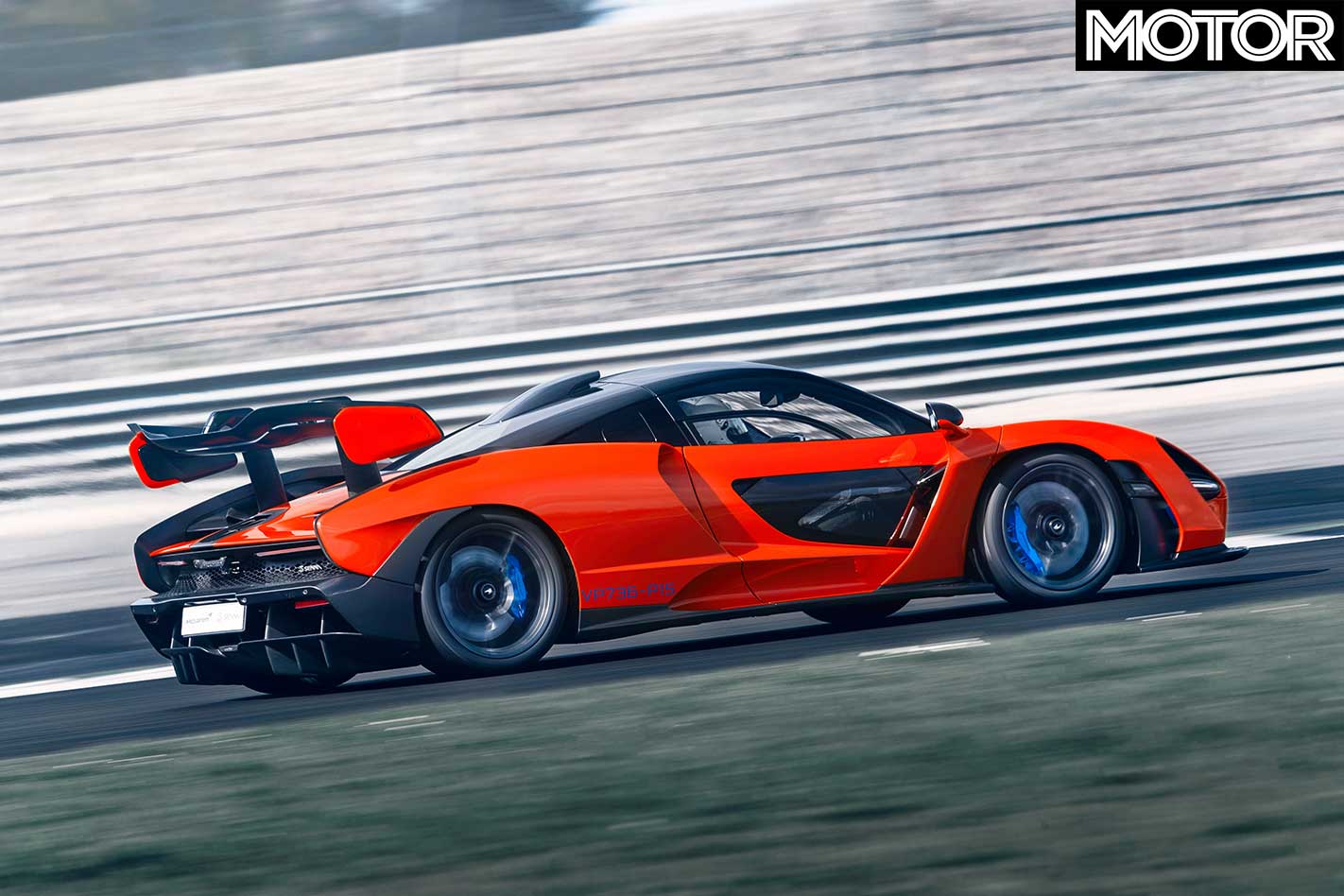
It’s nothing like, say, a similarly powered Ferrari F12tdf or Aston Vulcan in that respect. You want to use 588kW? Just have it. Oh, there’s the soft limiter. Click a paddle and help yourself to another 588kW.
If there’s a more approachable car with this level of power, I haven’t driven it, so the engine isn’t what is shocking about the Senna (although there are two things I’ll come to that are). Nor is it the hydraulically assisted steering, which is responsive yet smooth, deadly accurate and feelsome, and perhaps the best power steering set-up in existence today.
And neither is it the low-speed cornering, during which the Senna feels to the 720S like a Lotus 2-Eleven does to an Elise. The intrinsic character is there, the incisive turn, the accuracy with which it can be placed, the resistance to roll and yet the compliance over bumps, but it’s all amplified on account of the weight reduction. You feel that so very, very much – much more than the power.

If you were given the choice of more power or less weight, one corner would be enough for you to pick the weight loss, every time.
But all of this comes in a faintly reassuring character that you can feel in every McLaren from the 540C upwards. So is this – the same character of chassis, of transmission, of engine, of handling – a problem? One ex-chief exec of a rival supercar maker once said he thought it might be: “I couldn’t sell the same kind of sausage,” he said, “and charge twice as much for one that was only 10 per cent longer than another.” He hasn’t since left to become a butcher, but I knew what he meant.
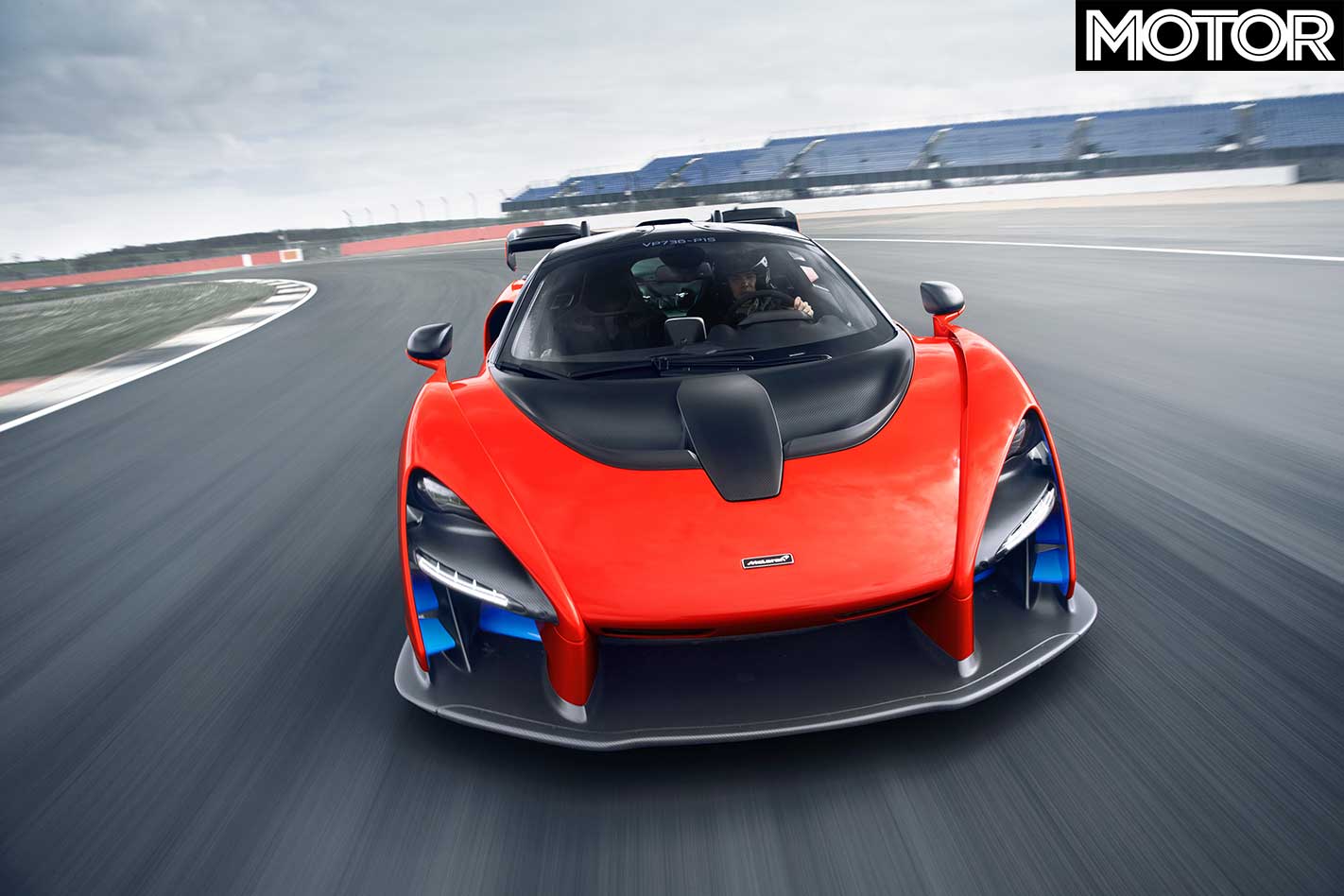
But the Senna steers around this accusation in two ways. One is its faintly astonishing corner speeds, and specifically the fabulous high-speed stability. It is so absurdly reassuring and stable – yet still wildly exciting – that you will drive it faster and faster and feel like you want to drive it faster and faster again. Like a GT 911, it feels like it has the integrity to be thrashed day after day while you learn more about it and yourself.
The second thing is the way it stops. It’s a bit of a cliche to talk about the way track or racecars brake – single-seaters are the bomb in this respect – but I’ve never known anything with more than one seat that brakes like the Senna.
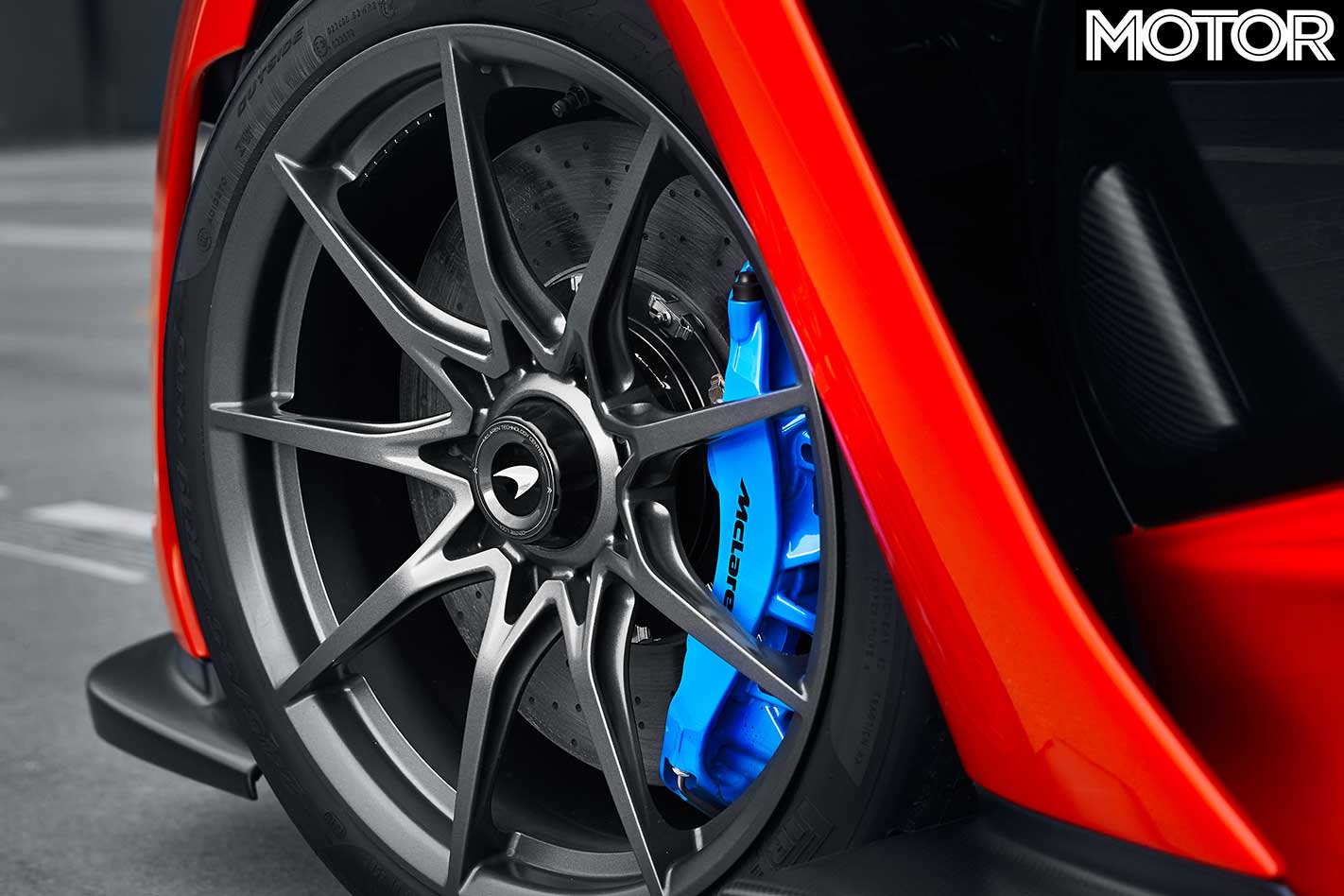
McLaren reckons it can stop from 200km/h in 100 metres – 16m less than a P1. But that doesn’t really mean anything until you learn that you can stand, as hard as you possibly can, on the brake pedal, from high speed, and it sheds speed like it has driven into a vat of golden syrup.
Ultimately it’s those two things – and they are as addictive as they are significant – that take Senna from being just another, faster McLaren and turn it into another kind of McLaren. One that might just become the world’s fastest production road car. Any way you look at it, it’s one special creation.
Senna’s Suspension Secrets
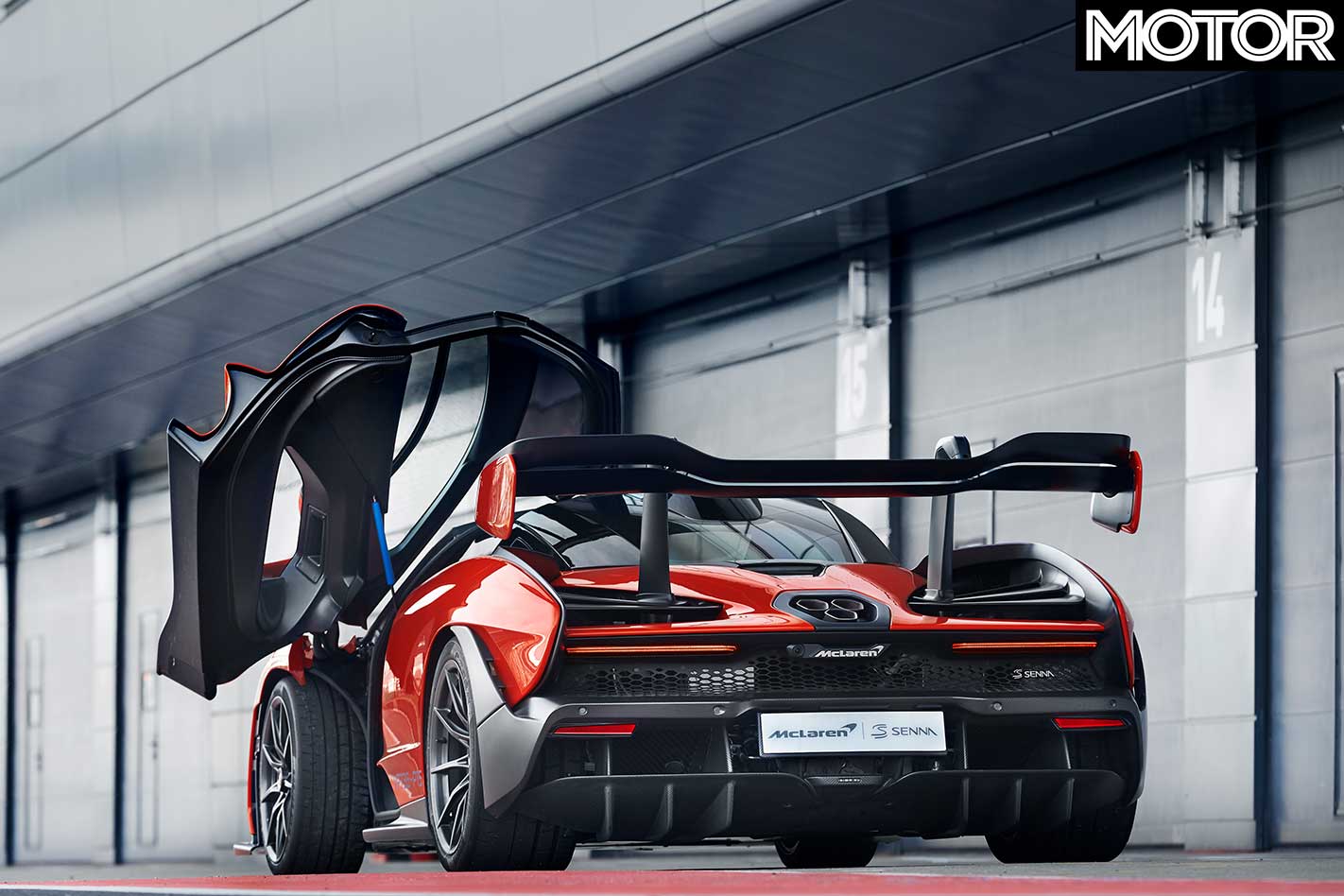
McLaren’s suspension system is no less fiendishly complicated on the Senna than it is on its other road cars. It has hydraulic springs, with two chambers on each corner: one for heave (front-rear), the other for roll (side-to-side), with an accumulator between them, to accommodate fluid as it moves.
With one side or end pressuring another, it stays flat and resists dive and roll, the latter without anti-roll bars. It’s what gives its road cars exceptional ride quality. So while there’s a coil spring on each corner of the Senna, it’s very small and just there to maintain a static ride height.
There are oil-filled dampers, too, and as you flick through the road-biased modes it’s these that stiffen, thanks to a reduction in the size of the flow valve. Putting the car into its Race mode, though, is what reduces the ride height by 50mm and finally has an effect on the hydraulic spring rates: the heave spring rate doubles, with the roll spring rate increasing 2.5 times.
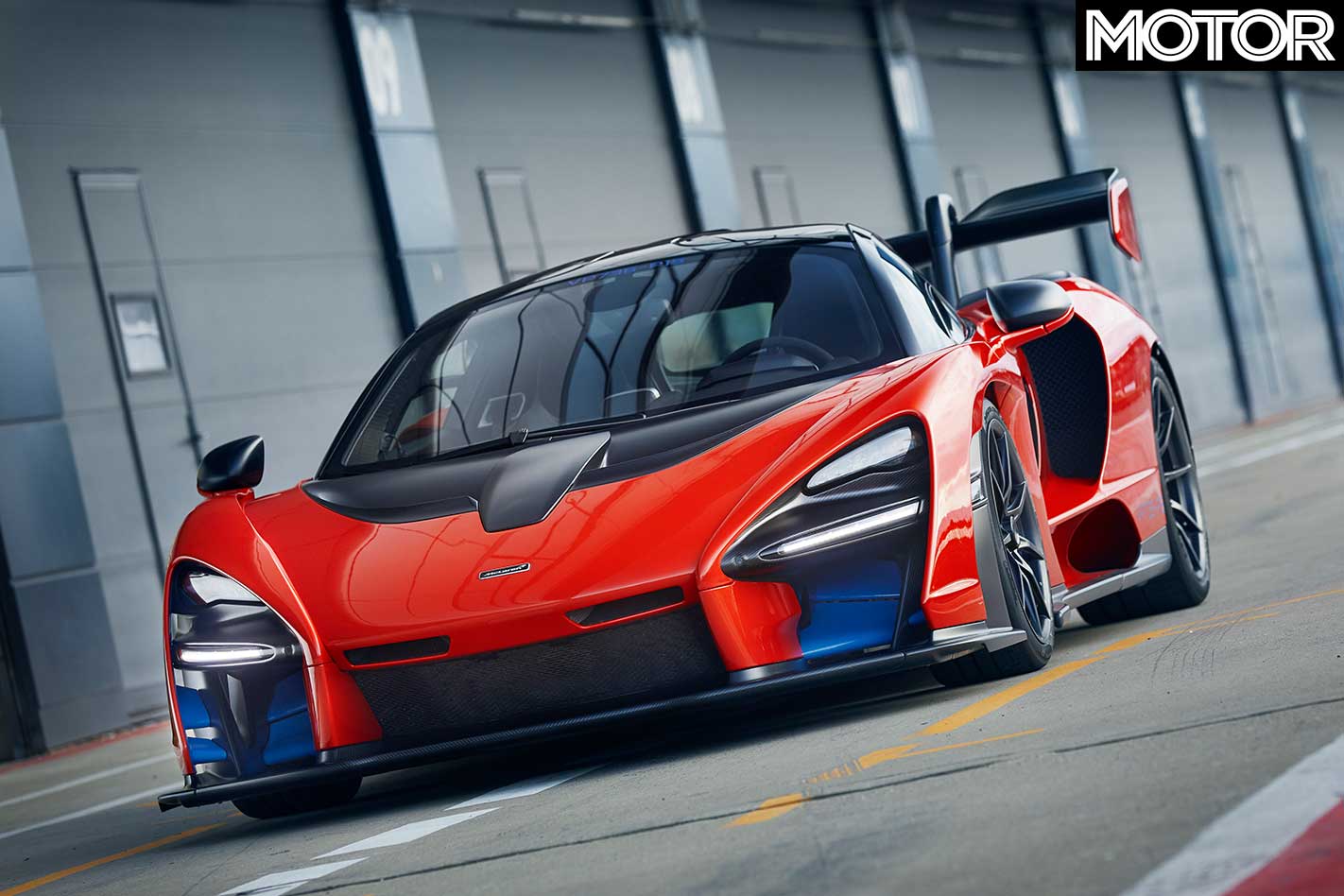
FAST FACTS McLaren Senna
BODY: 2-door, 2-seat coupe DRIVE: rear-wheel ENGINE: 3994cc V8, DOHC, 32v, twin-turbo BORE/STROKE: 93.0 x 73.5mm COMPRESSION RATIO: N/A POWER: 588kW @ 7250rpm TORQUE: 800Nm @ 5500-6700rpm WEIGHT: 1198kg (dry) POWER-TO-WEIGHT: 491kW/tonne TRANSMISSION: seven-speed dual-clutch SUSPENSION: double wishbones front and rear; independent interconnected hydraulic dampers; K dampers L/W/H: 4744/1958/1229mm WHEELBASE: 2670mm TRACKS: 1654/1618mm (f/r) STEERING: hydraulically assisted rack-and-pinion BRAKES: 390mm carbon-ceramic discs, 6-piston calipers (f); 380mm carbon-ceramic discs, 4-piston calipers (r) WHEELS: 19.0 x 8.0-inch (f); 20.0 x 10.0-inch (r) TYRES: Pirelli P Zero Trofeo R; 245/35 R19 (f); 315/30 R20 (r) PRICE: £750,000 (AUD$1.4 million)LIKE: Mega performance; handling; stopping power; aero DISLIKE: It’s not cheap; left-hand-drive only; all sold RATING: 5 out of 5 stars

